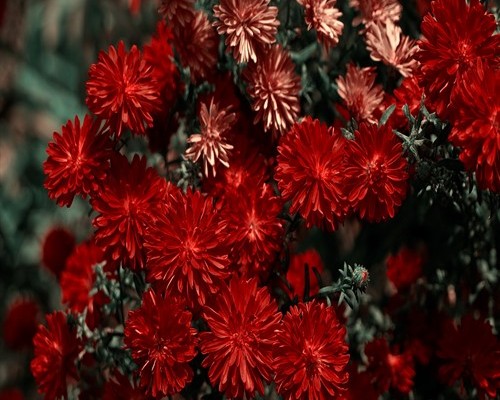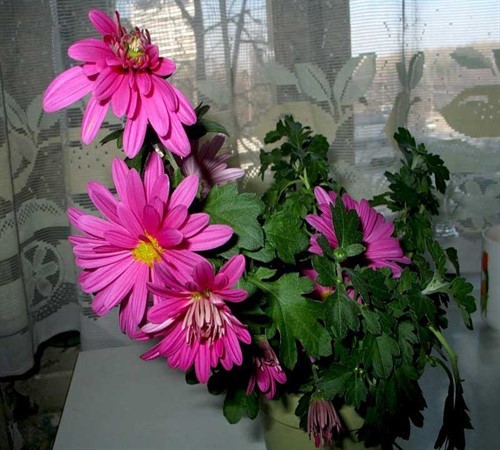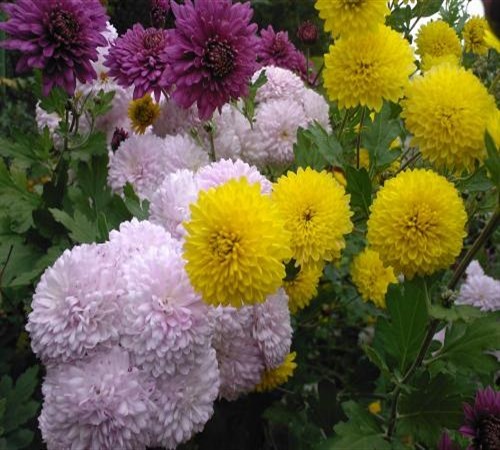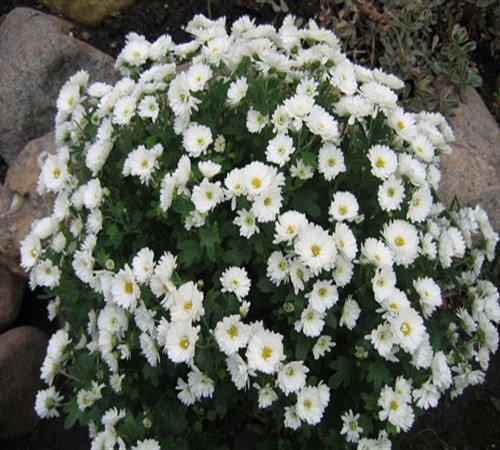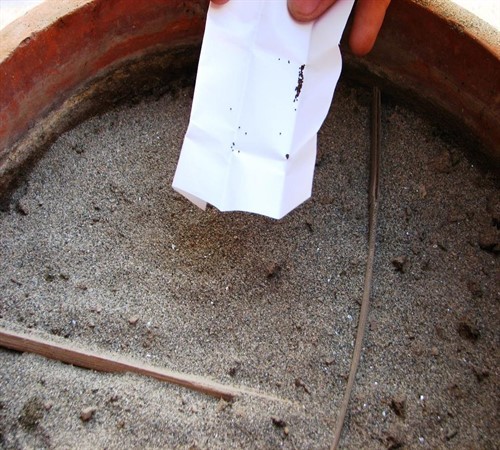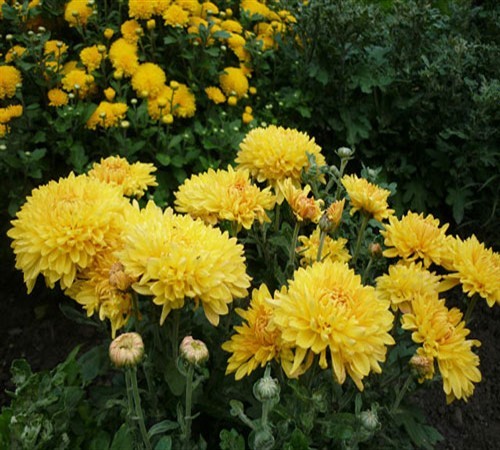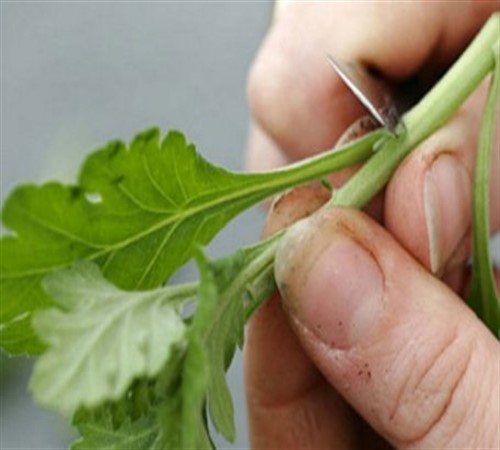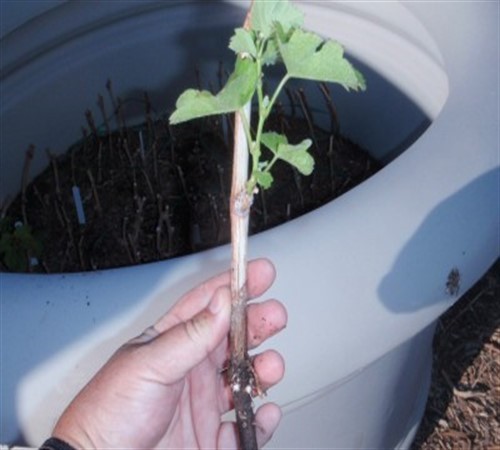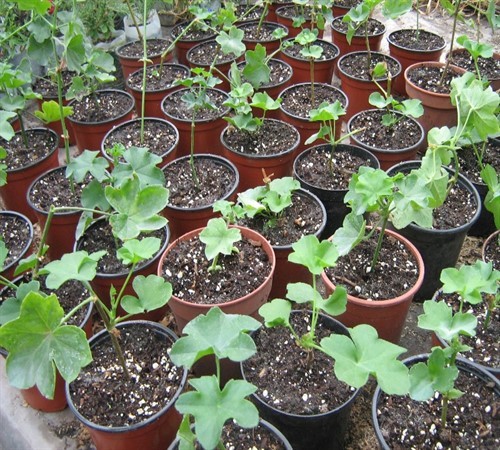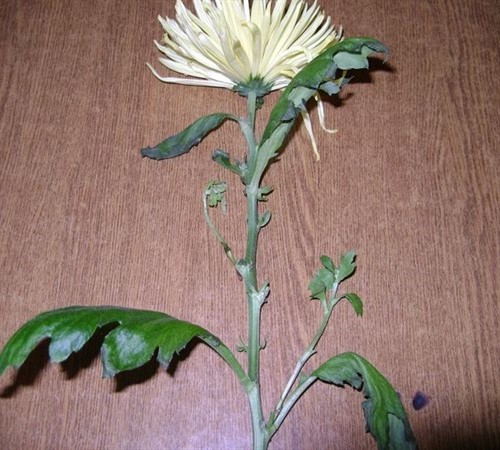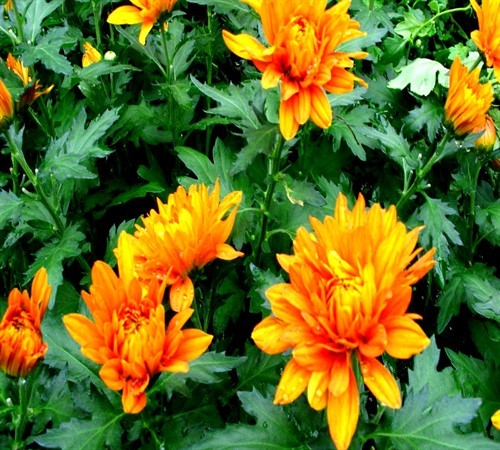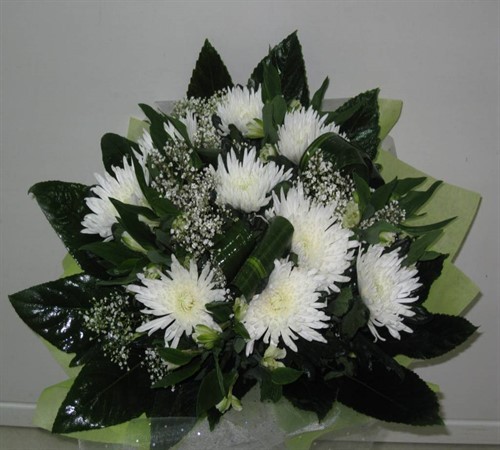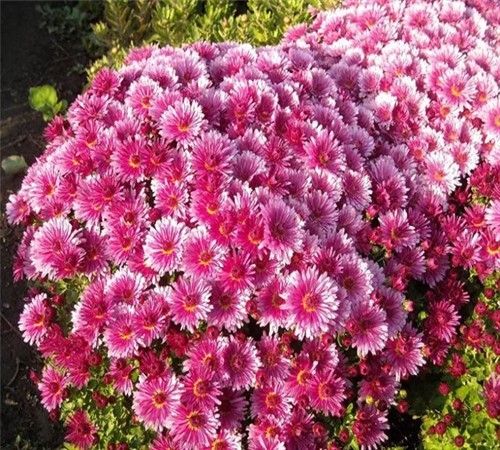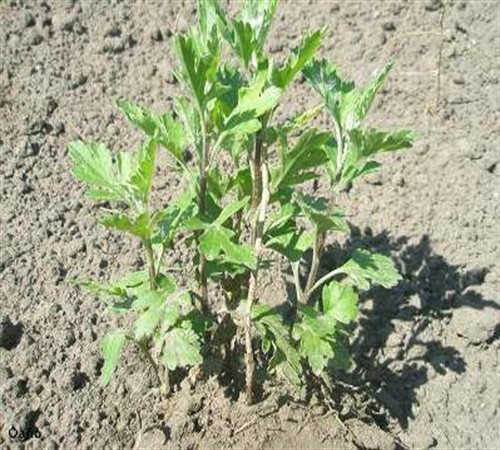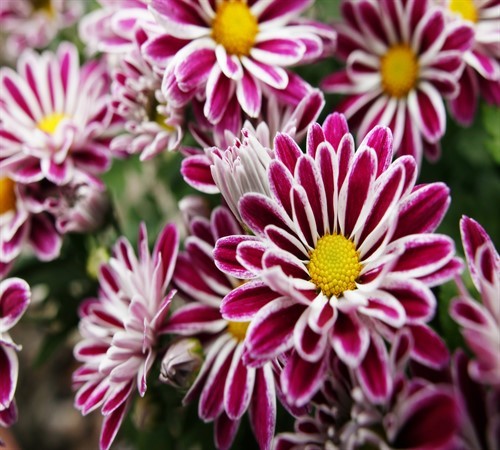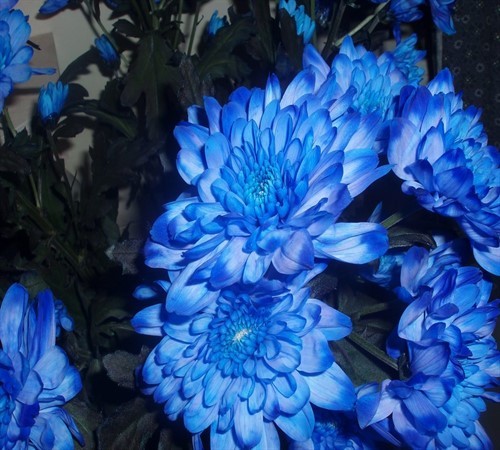Excellent decorative qualities of chrysanthemums and carelessness contribute to the widespread use of plants for the design of the local area, as well as residential, office and other premises. You can get and propagate these attractive plants in several ways, each of which is good in its own way.
Content
General view of the plant
Chrysanthemums are plants of grassy or semi-student type. Depending on the varietal supplies, the height of chrysanthemum is 20-80 cm. The most diverse color of the inflorescence is perfectly looking at the background of dissected, serrated or simple leaves of a dark green shade, which are placed on the plants' stems in the next order.
Currently, more than 100 varieties are derived from each other height of the bush, the structure of inflorescences, the colorful and color of flowering, so it is possible to choose a variety that won perfectly in single compositions either on an alpine slide, will not be difficult, and you can properly with the plant that you like ways.
Methods of breeding chrysanthemums
The choice of this or that method of reproduction affects the varietal characteristics of the plant.
Reproduction of seeds
The reproduction of chrysanthemum seeds collected from plant growing in the garden is more suitable for varieties with small inflorescences, since to preserve the varietal indicators of complex hybrids represented by large-flower chrysanthemums, it is rare.
Seeding time is determined by the start of flowering:
- for the Rannets, sowing is carried out at the end of February or early March;
- for late decades of copies - the last decade of March until mid-April.
Sowing work as follows:
- containers are treated with water with the addition of a small amount of manganese, so that the water gets a slightly pinkish shade;
- after drying, the boxes are filled with a mixture of fertile soil, sand and humus in a ratio of 2: 0.5: 1;
- on top of a well-moisturized substrate, seeds unfold, which no need to sprinkle soil, since for germination, chrysanthemum seeds requires light;
- boxes are covered with glass or film to maintain the necessary humidity mode and removed into a light room, where the air temperature is 10-15 ° C;
- periodic moisturizing seeds is carried out by means of a pulverizer;
- after 7, less often 14 days, there is a sector appearance, after which the film is removed or the glass;
- when forming 2-3 pairs of leaves, the seedlings are peeling into the container of larger size, at a distance of 5-10 cm from each other.
In late May - early June, when the threat of frosts, the seedlings are planted into the open ground. Plants bloom at the end of June.
It is possible to sow seeds not only in the boxes, but also immediately into the ground. For this:
- the wells are prepared at a distance of 10-15 cm, in each of which are seeded by 3-4 seed;
- the wells are covered with glass that is cleaned for soil moisturizing or when shoots will appear;
- when forming 2-3 pairs of leaves, seedlings are transplanted with a lore land at a permanent place.
The flowering of plants obtained by sowing seeds into the ground occurs at the end of August - early September.
Reproduction of cuttings
The preservation of the characteristics inherent in this or another plant variety occurs when the chrysanthemums are reproduced.
The uterine bush, suitable for stalling, is chosen in the fall, despite the fact that the billet of the cuttings is produced in spring. At the same time, the order of work on the preparation of the bush to shine is as follows:
- During flowering, healthy plants are selected without any signs of diseases or pests;.
- When the plants are swinging, the above-ground part is cut off.
- With the onset of frosts of chrysanthemums dig and placed in the boxes, after which they remove to the winter to the cool room, where the temperature is 3-8 ° C.
- Periodically, the plant must be water, not allowing soil drying.
- A month before the design process, the container with the plant is transferred to a well-lit and warmer room with a temperature of air 10-12 ° C.
- The amount of irrigation increases with increasing temperature.
- After 1-2 weeks, the renewal kidney begins to appear, of which the root piglery is formed, which signals the need to start shining.
Failure to comply with the storage conditions of the uterine bush often leads to the fact that young plants do not bloom or shoots appear ahead of time.
The drawing is produced when forming 4-6 leaves or 2-3 intercosals:
- 8-10 cm long cutlets are cut off with a sharp knife at an angle of 45 ° C in the middle of the intercoux. At the same time, unreserved stalks are not suitable for overlooking, and too soft shoots are too softened.
- The lower part of the harvested cuttings is released from the leaves, leaving only 2 sheets from above, which must be half to shorten with scissors to avoid unnecessary absorption of moisture.
- The cuttings are planted in a container with a predetermined soil, including humid, fertile soil, as well as sand in a 1: 2 ratio: 0.5 ratio. At the same time, the sand layer should be about 2.5-3 cm. An alternative variant of the substrate with good performance of air permeability and moisture intensity is the sand mixture with perlite in proportion 1: 1. At the same time, it is necessary to put a pebble to the bottom of the seed container, ensuring drainage conditions, since chrysanthemum does not tolerate excess moisture.
- Before the immediate landing, the lower cutting cutting is wetted in a solution that stimulates the growth of the roots ("corneser"), after which the planting material is immediately deepened by 1.5-2 cm into a moderately moistened layer of sand at an angle of 45 ° C at a distance of 5 cm apart from each other .
- The container is covered with glass or film to maintain the required level of humidity and put into a light place with a temperature optimal to rooug the temperature of 17-19 ° C.
- It remains to be traced that the soil in the container always has moderately wet, which is achieved by daily spraying.
The duration of the rooting of cuttings depends on the time of landing:
- The cuttings planted in January-February are rooted for 3-4 weeks.
- Cuttings planted in April-May are rooted for 1-2 weeks.
The increase in the cutlery indicates a successful rooting of plants. After the appearance of new processes, the film must be removed. 2-3 weeks after rooting, shoots can be sold in soil. However, in the threat of frosts, rooted shoots are transferred to a room where the air temperature is 8-10 ° C, which will exclude the outstanding of the future plant.
Features of the breeding of chrysanthemum with bouquet or uterine bush:
- The flowering of plants of one variety obtained from the early and late cuttings occurs almost at the same time.
- The rooting of small-ceiling chrysanthemums is faster than large-flowered, so small-bedroom varieties are better to shine in January-February, and large-flowered - in March-April.
- The height of chrysanthemums obtained from the early cuttings is significantly higher than plants obtained at a later stallion.
- With an insufficient number of uterine material, you can get a lot of young plants of one age. For this cuttings, harvested as shoots, are packaged in wet sawdust and stored on the bottom shelf of the refrigerator. After obtaining the required number of cuttings, pass to massive rooting. However, storing cuttings in the refrigerator is desirable not more than 2 weeks.
The billet and subsequent rooting of the cuttings is made not only in spring, but also in the summer, in the fall. However, they will have to plant them all the same in the spring of next year, although the flowering of chrysanthemums rooted in the summer and autumn, the next year is ahead of the beginning of flowering chrysanthemums derived from spring cuttings.
Relatively chrysanthemums from the bouquet of reproduction are carried out similarly.
Reproduction of the division of the bush
The easiest and less labor-intensive method of breeding chrysanthemums is the division of the bush.
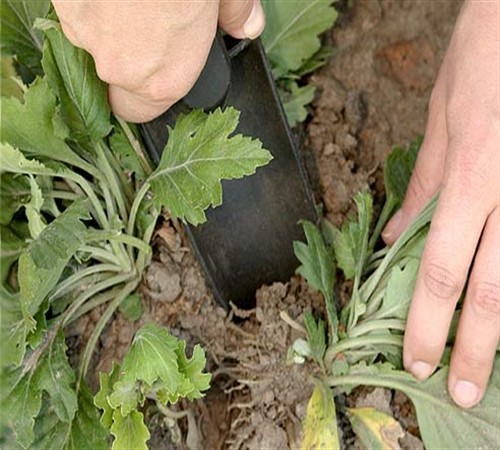
In the spring, when the bush is covered with young shoots, it's time to reproduce the flower reproduction. For this:
- The bush is pouring from all sides and carefully pull out with a lump of land, so as not to damage the roots.
- The earth neatly shakes or wash off the jet of water.
- A sharp knife of the bush is divided into several parts so that the individual part has roots and 3- 4 escapes.
- For 30 minutes, the roots of the parts obtained are treated in a weak manganese solution.
- Dellets are planted in a well-prepared hole, pressing the earth around the flower to avoid the formation of emptiness.
- Water and protect the seedling from sunlight, having tried a bush with branches.
The division of chrysanthemum into several bushes contributes not only to the reproduction, but also to the rejuvenation of the plant, because if the bush grows without transplanting for more than 3-4 years, then the flowers are minced, and the plant becomes more prone to chronic diseases.
Reproduction by chains
With regard to winter-hardy varieties or chrysanthemum, the reproduction is carried out by touching the stems as follows:
- In the fall, near the bush dig a groove, width and depth of which correspond to the height and width of the bush.
- The stalks of the plants are placed on the bottom of the trench and pin it with a bracket.
- On top of the plant, a layer of 15-20 cm of loose land is poured and left for the winter.
In spring, young shoots with their own root system will be thrown out of the kidneys. When the frosts retrete, it is necessary to unrest church and cut the stalks to pieces so that each part contains the roots, and then plant the received shoots to a permanent place.
Landing plant landing material
The abundance of blossoms of the future plant largely depends not only on the variety, but also on the conditions for its growth.
Choosing a place
To land the plant, a windless place with a midday shading is suitable for the street, because in the shade of inflorescence is minor, and in the conditions of constant walking under the right sunny rays - quickly flowing, the leaves are yellow and fall.
The sublime area will allow to avoid water stagnation in a rainy period or with close grounding of groundwater, since the roots of chrysanthemum are located parallel to the surface.
For room chrysanthemums need scattered light. The effect of scattered light will allow the shallow mesh or march fixed on the window.
Preparation of soil
For full development and abundant flowering, the chrysanthemum is suitable, or a loamy soil with a neutral or a weak-eyed reaction, which is necessary a month before landing, delete all weeds and make a bird litter or humus as fertilizer.
Planting process
Plant landing in the ground is carried out in cloudy weather, either early in the morning or late in the evening in the sunny, because for young plants, the straight rays of the sun have a destructive effect.
The landing material plant in the ground is reduced to the following work:
- They dig a hole in a depth of about 40 cm for each plant at a distance of 30-50 cm from each other.
- On the bottom of the holes are placed by pebbles, broken brick or other materials playing the role of the drainage system.
- A fertile soil mixed with sand in a 1: 1 ratio poured over the arranged drainage.
- Lower the seedling in the hole, blocking at 4-5 cm and sealing the earth around the flower in order to avoid the formation of air pockets.
For favorable development of the plant, constant watering is needed, periodic loosening of the soil and fertilizers, as well as timely removal of lateral shoots.
Plant design
To form a bush of the right shape and formation of flowers, with respect to varietal signs, the tops of the central buds and side shoots of plants must be quenched in a timely manner.
For large-flowered varieties - the top of the central escape pinches with the appearance of 8 sheets, after which the side shoots are developing, of which they leave 2-3 strong, and the rest are removed. Hourging is made as needed 1-2 times a week to form one large flower on each stem.
For small-bedrooms - the top pinch with the advent of 4-6 sheets, after which new shoots are formed, the sepure of which is produced in the presence of 8 and more leaves. After re-segments, many new shoots appear, as a result of which the chrysanthemum bush acquires a pomp.
Periodic stepsing affects not only the formation of the bush, but also on the development of the plant as a whole, since the stepsing only pull a large amount of nutrients from the bush.
Thus, the reproduction of chrysanthemums can be produced not only if the bush is growing in the garden, but also from a presented bouquet, and more clearly the whole process is shown in the video - reproduction of chrysanthemum.

